Want to Make Money Teaching Film? Here's What You Need to Know [FREE Downloads]
Freelancers: here's why this is the best hustle ever.
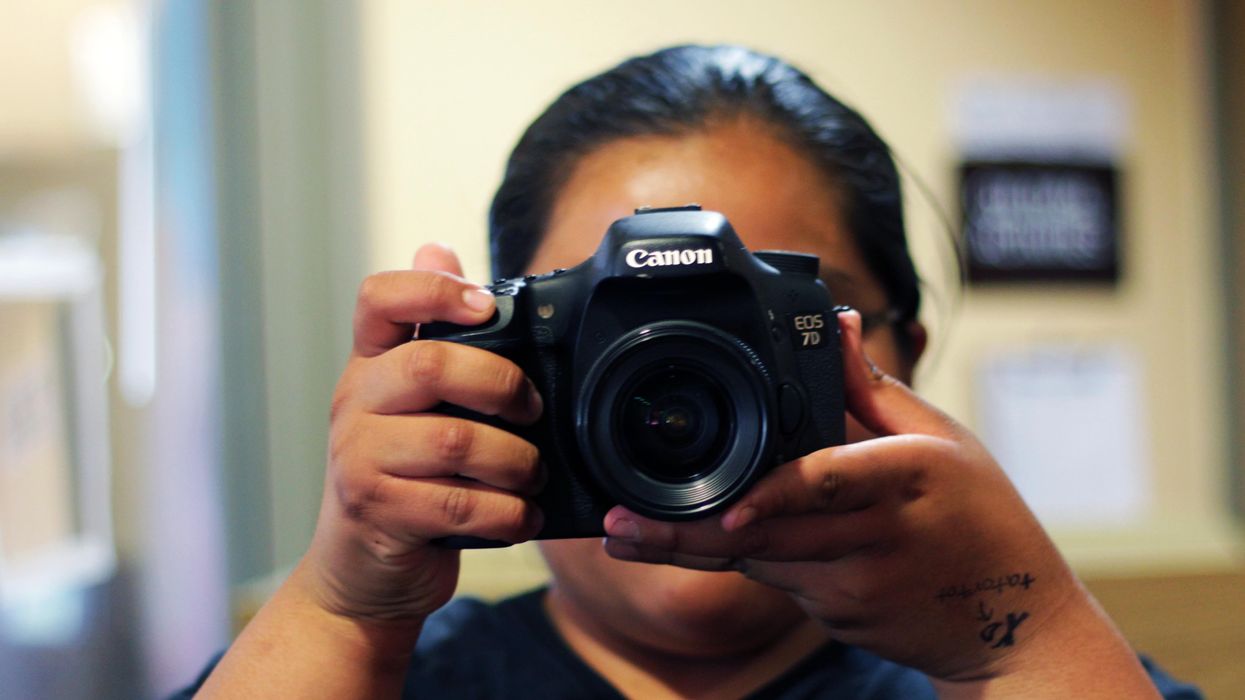
The camera is a powerful thing. There are more people than ever who have access to one.
Problem is that doesn’t mean they know how to use it.
For the last two years, I’ve added ‘film teacher’ to my repertoire with a program called Kinlani Film Project.
It started as an idea of what would be fun to do in between client videos and getting my pipe-dream projects off the ground. Now it's not only an extra source of income but a rewarding side gig that's changed my whole appreciation for film. If you can exercise a modicum of patience, working with brand-new filmmakers with uncaged creativity can offer you a totally new perspective on the craft.
There is a catch though.
It's not exactly obvious how you start down this path – without having to go down some time-consuming academic channels that you might not be interested in.
Today I'm here to tell you that if you've got something to say as a filmmaker, you'll be good at saying it off-screen too. If you can pitch yourself as an instructor and come up with a curriculum, not only is it a good way to make more money, teaching can keep you sharp as a filmmaker.
No master's degree required!
In this part-tutorial and part-manifesto breakdown, you can download my film curriculum as inspiration and use the following nine steps to land yourself a teaching gig. It will make you extra cash, and it just might lead you to launch a new generation of filmmakers.
First, what kind of filmmakers make the best teachers?
Who can teach film? Let’s address the basics. Do you need a master’s degree? Do you need professional movie credits? Do you need to have made any films at all?
My answers: no, not necessarily, and YES, come on now.
I personally don’t think you need to wait for some external accolades (college degree, IMDB links) to be capable of teaching. However, you MUST have a variety of hard-earned filmmaking skills to be good at teaching a class. The broader jack-of-all-trades type of filmmaker you are, the better you will be poised to teach. (The exception would be if you want to teach something specific, like film history, trailer, or sound design. In which case, dog help you!)
The truth is that most people joining a film class will be looking to make a film, either by themselves or with the help of others in the class. And that should be the point of it all, shouldn’t it? That means you must be able to teach them enough of each aspect of filmmaking to be able to do that. This means not only the technical aspects of recording video and audio but editing, documentary ethics, production design, screenwriting, all the goods.
[Editors note: Always feel free to direct them to No Film School for additional resources and knowledge!]
Filmmakers who know at least a little bit about each aspect of the process are going to be much better as this kind of teaching.
Your goal here is not just to make money teaching film, but to help foster new, budding filmmakers and refresh your own perspectives on collaboration in the process.
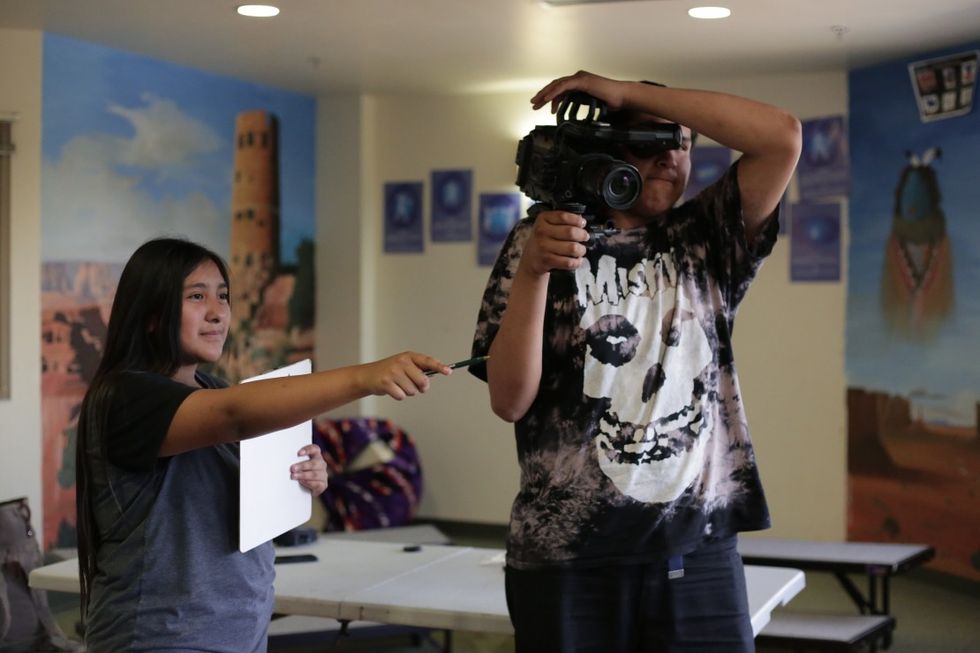
The broader jack-of-all-trades type of filmmaker you are, the better you will be poised to teach.
HOW TO GET PAID TO TEACH
1. Find out who in your area would benefit from your services
Getting a paying gig for yourself rarely comes from seeing a ad for ‘film instructor.’
Like everything else in this business, you are better off self-starting. Nobody will judge you if your first thought is not “who needs my services?” but rather “who can spend money on my services?”
Obviously, upper middling, affluent, and retired people have expendable income and time. But honestly, unless you are passionate about reaching a certain part of that community and helping express their filmmaking voice, don’t get caught up in that.
And I don’t mean to be ageist. (In fact, think of all the amazing stories that could be told by those grizzled motorcycle mamas or chess-playing grey hairs at the senior center.) I’m not saying there’s one age group worth teaching to, I’m just saying teach who you want to teach, and no one else.
For me, it was Navajo and Hopi teenagers living in Flagstaff. Frankly, I was never a huge fan of high school students or the high school atmosphere. But after I first met some of the kids through the organization they use to attend the local high school, I had this strong suspicion they would make good filmmakers. They are extremely motivated, very creative, and come with a diverse cultural background. What started as loose pitch to see what kind of films these kids could make has become an entrenched creative collaborative of teenagers who I have been working with for a few years now.
Bottom line: it starts with thinking about the type of people you would want to teach. Then move on to the next step to figure out how to make that happen.
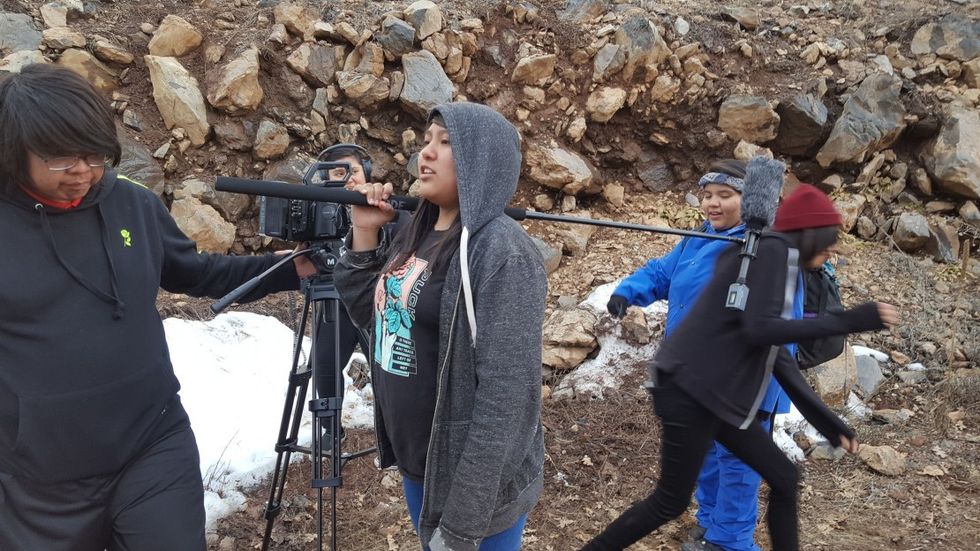
I’m just saying teach who you want to teach, and no one else.
2. Get your teaching gig
There are three ways to go about this.
- Pitch yourself to an organization who can hire you
Preferably, one that is already in the habit of providing activities or hosting events. This could be a rec center, the Boys & Girls Club, senior center, local film festival, a community college. Send a feeler email, a resume, or go by in person if that seems appropriate. Start the conversation. Explain the big ideas of your film class/club/program.
- Get a grant
Just get a grant, how hard is that?
Obviously, finding, applying to, and getting a grant is no easy thing. However, think local. If you find that the group you’d want to work with can’t afford to pay you, or the rate you need, would a local business or humanities group or booster club be able to put up the money for the program? It's often less time consuming to get funds from local businesses. Be prepared to let them know, as you would with a sponsor deck, how their business will be seen and thanked throughout the program.
- Go in on it with another film entity
If you’ve worked with an organization, especially a film-specific one, they might be in a good position to help you host a class, especially if your idea of who you’d like to reach is more broadly 'people who like film.' A good example would be Tacoma’s The Grand Cinema Film Education for Adults or the Smart Device FIlmmaking Workshop at Santa Fe’s Meow Wolf. If the infrastructure already exists, send them your resume and let them know you'd like to offer a class.
3. Calculate your gear* and prep time into your asking rate.
If you’re going to use your own gear, and you most likely are unless the organization happens to have an inventory of film equipment, calculate that into your budget. (And consider whether you might want to get your gear insured. You may want to take a look at this useful NFS piece, 5 Tips on Organizing and Maintaining Your Filmmaking Gear to make sure you go in with everything accounted for.)
Also, recognize that you will be planning the course from scratch, so you will be working beyond the time spent with your students to plan and prepare. So if minimum wage near you is say, $15 an hour, but you spend an hour preparing for every hour teaching, don’t go under $30 an hour as the very least! (This is just an example of how you want to account for all your time -- feel free to go down a stipend route or go with any dollar figure that matches your going rate!)
*If you don’t have a ton of gear, then read more below in Step 4.
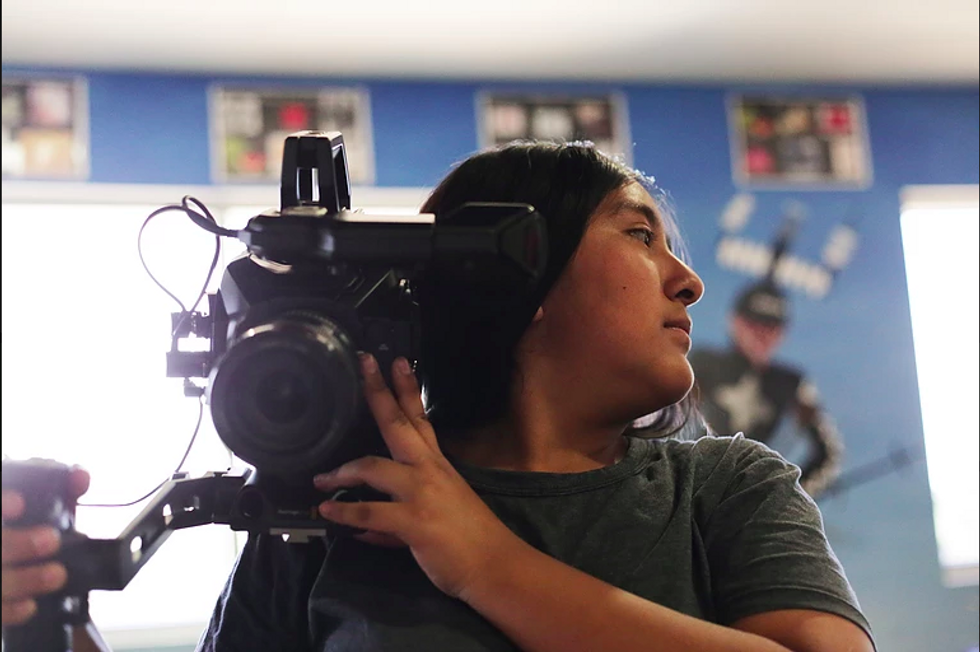
A teaching gig, like every part of filmmaking, is never just about making money. It’s about how to make money doing something you are passionate about.
HOW TO DESIGN YOUR COURSE
You’ve got prospective students in mind and a way to get paid to teach them. Now what?
Well, here's a look at the first two lesson plans in year two of Kinlani Film Project. Each involves seeing cool films, getting student input on cinematic techniques as well as cultural relevance, and most importantly, getting cameras into hands! This program was designed to have students complete a series of small films in small groups and one more ambitious film as a group.
You can download the entire 21-days of the class, along with all the other materials I could scrounge up, here. I don't care if you straight up rip off my ideas! Although, I should probably get credit if you do. Or maybe a cup of coffee.
At the end of the first two days, we had covered 100 years of film history, shot a fan film of Smoke Signals and made three Spaghetti Westerns. Not bad!
4. Use your gear to design your course.
Remember when I said that jack-of-all-trades filmmakers are better equipped to be film teachers? That’s also the case with being equipped, literally. Since I work as a boutique full-service production company, I have a broad assortment of gear that lends itself to low budget indie filmmaking. Therefore, every part of my curriculum is based off the gear that can pull it off.
Have one, big expensive camera? Sounds like you will be shooting one project at a time.
Have multiple small cameras? Send out small groups at once, and see what they come back with.
Have more audio equipment than video? Great, ask everyone to record an audio story or series of sounds that they can then translate into a film.
Have nothing? Then think smartphone, ask for a small budget or materials fee and get a few lenses and cases from the likes of Beastgrip and Moment.
5. Map your film course out like a good indie producer.
How much time do you have? How many meetings and for how long? That’s the first ingredient. What is the outcome of your course? Should each person have a film? Many short films? One group masterpiece? Using what you want to achieve with a realistic production breakdown will help you zoom in on what you hope people to accomplish in your class. If you need a refresher on planning an entire indie production on your own for the class, including what forms to use, these NFS articles can help:
- 10 Things You Should Know When You First Start Out in Filmmaking
- Here's a Pre-Production Checklist That Might Make Planning Your Film Easier
- Every Filmmaking Form You'll Ever Need in 99 Free Templates
6. Weave in relevant films & history
- What films are you going to screen?
Don't just show films from the Criterion list that you think are cool, show films that are relevant to your students as future filmmakers.
Because my program is oriented for Native youth, I focus on the legacy of representation on screen and barrier-breaking indigenous voices today. And while showing work can and should be a big part of learning how to make a film, it takes a lot of thought to figure out exactly the right line-up. You’re basically curating a film festival for each class! At some point, you will be like, Satantango or Youtube videos?
Honestly, I like to show short films and clips from amazing movies that demonstrate either something amazing thematically or technically more than I show a whole film. I do this because I have found that beginning filmmakers can’t process a whole film all at once, even if I’m dying to. If you’re teaching a beginners acrylic paint class, you might not start with students observing the entire Sistine Chapel and then asking them to paint something similar.
- How are going to going to screen these films?
Another reason I tend to screen shorts and scenes: our screening setup. On most classes, we have a project, a small pop-up screen, and my sound bar to screen films. If we had a better screening facility to work in, maybe I’d screen more.
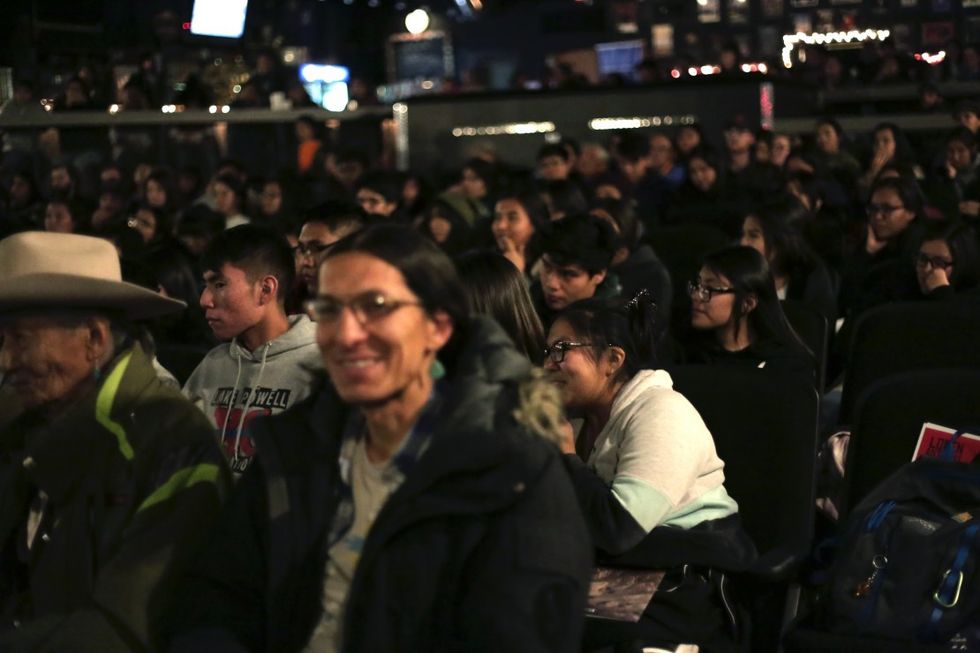
You’re basically curating a film festival for each class! At some point, you will be like, Satantango or Youtube videos?
7. Teaching production 101
Goodbye whiteboard! OK, only a little whiteboard.
Why should your students memorize what the f-stops are frame rates and aspect ratios are if they’ve never held a camera? Those lessons are endlessly easier if they can actually see and experience what you are talking about. It’s your class, you don’t have to follow some antiquated teaching methods that remove each part of the process.
What you do is up to you and can be extremely personal to your group. In the interest of helping you, I've uploaded a bunch of materials that I made for my class. They include lesson plans, storyboard sheets, and exposure workshops among other things. Browse and download them for free:
Here are some ideas for you from what I've done:
- Start by getting cameras in hands. Ask them to make a group documentary using each other as subjects.
- Have an exposure treasure hunt where each group gets a list of shots to accomplish
- Shoot a fan film that teaches them framing and camera movement
- Have students draw words out of a hat, and write a short script using those words as the setting, main character, or important object.
- Ask them to think of a story that only they can tell, that is unique to them, and tell is in 5 pages.
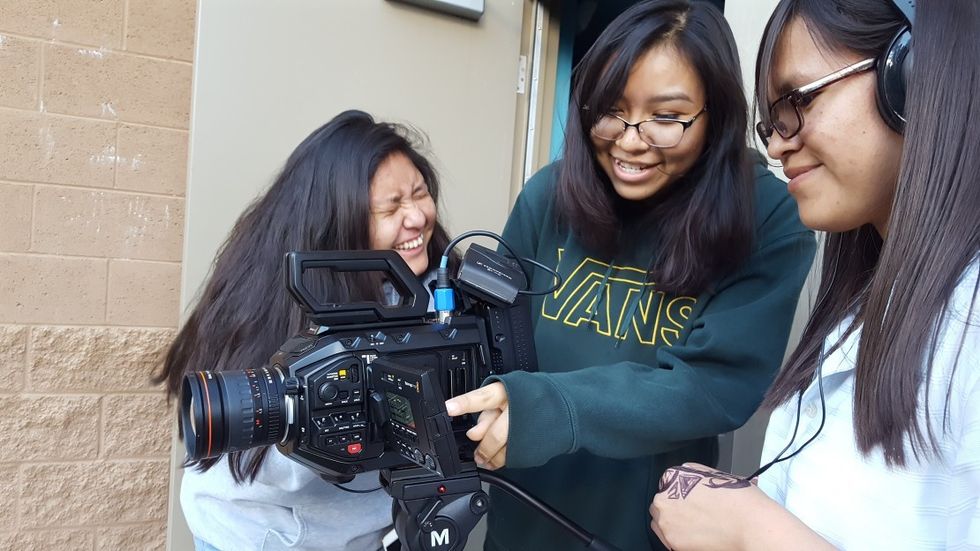
Finally, HOW TO WORK WITH STUDENTS
8. Limit what they can write and what they can shoot.
Orson Welles is often credited with saying, “the enemy of art is the absence of limitations.” I think most of us have witnessed that to be true. Amateur filmmakers usually don’t understand the scope of creativity or the reality of the mechanisms at work, otherwise, they would not be pitching you a story set in WWII or involving a group of teenagers that morph into wolves.
Your job is not to smite those ideas down. Your job is to give them limitations so they can get their creative ideas off the ground. Just as I mention a 5-page script above, I am also always impressed with what comes out of a project where students have been tasked with storyboarding and shooting a using only five shots.
9. Don’t waste their time, and they won’t waste yours.
Honestly, this is the final and most important thing that makes you a damn good teacher: not wasting your time. That inherently means, not wasting students’ time either. I expect that each film they make will be something we can screen publicly, and they can be proud of. Yes, some stuff they make will come out little lame, but if you have high standards, they will too. I never ask students to make dumb mickey mouse projects to pass the time.
And because my students don’t get a grade or have to come, I rely on real-world incentives. I ask film entities like the Bureau of Creative Works to put up prizes for more ambitious projects. I organize screenings of their work and submit the best projects to film festivals. (One of my students just became the first teenager from Northern Arizona to screen in the student section of the Phoenix Film Fest!) I may have even got them their first working gigs as filmmakers. After all, your goal as a filmmaker-turned-teacher should be to jumpstart careers, yours along with everybody around you. Right?
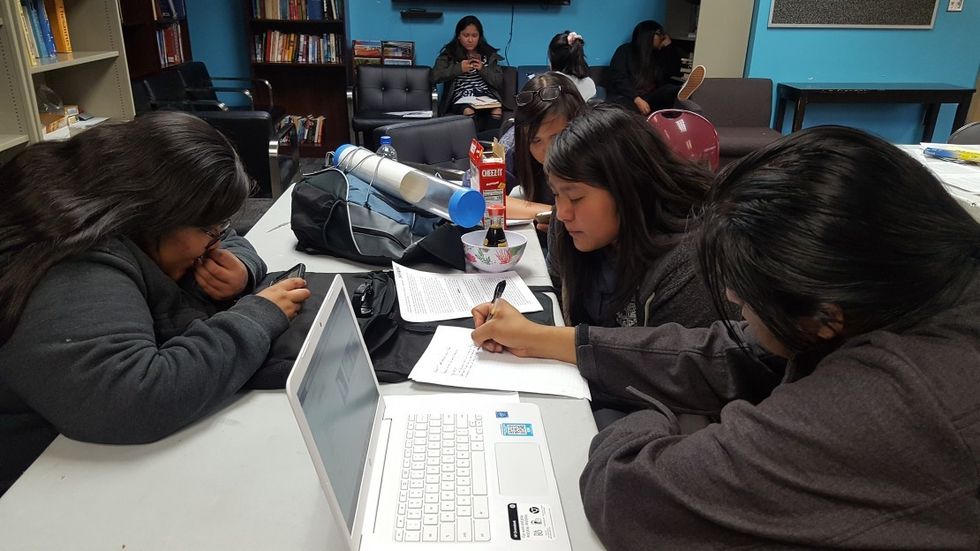
Your goal as a filmmaker-turned-teacher should be to jumpstart careers, yours along with everybody around you.
Don’t get me wrong, I’m working with teenagers, who can be a real p.i.t.a. sometimes. Regardless of what demographic you work with, if you go in holding people accountable to their real potential (while leaving some space for whatever a crazy time it is in their lives) then you will get more than just a class, but a genuine collaboration. And that philosophy can apply to students of any age, background, or level of experience.
A teaching gig, like every part of filmmaking, is never just about making money. It’s about how to make money doing something you are passionate about.
If you try something like this out, best of luck!
Tell us about. I'm always up to help if I can. And if you've had positive (or negative) experiences or ideas on teaching film, share them in the comments.
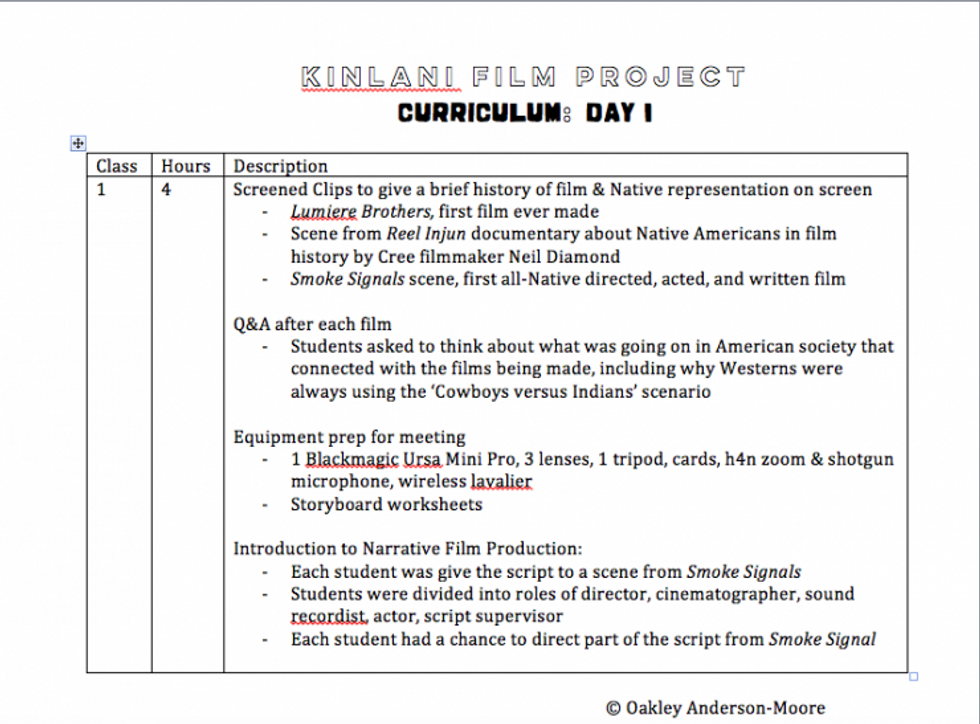
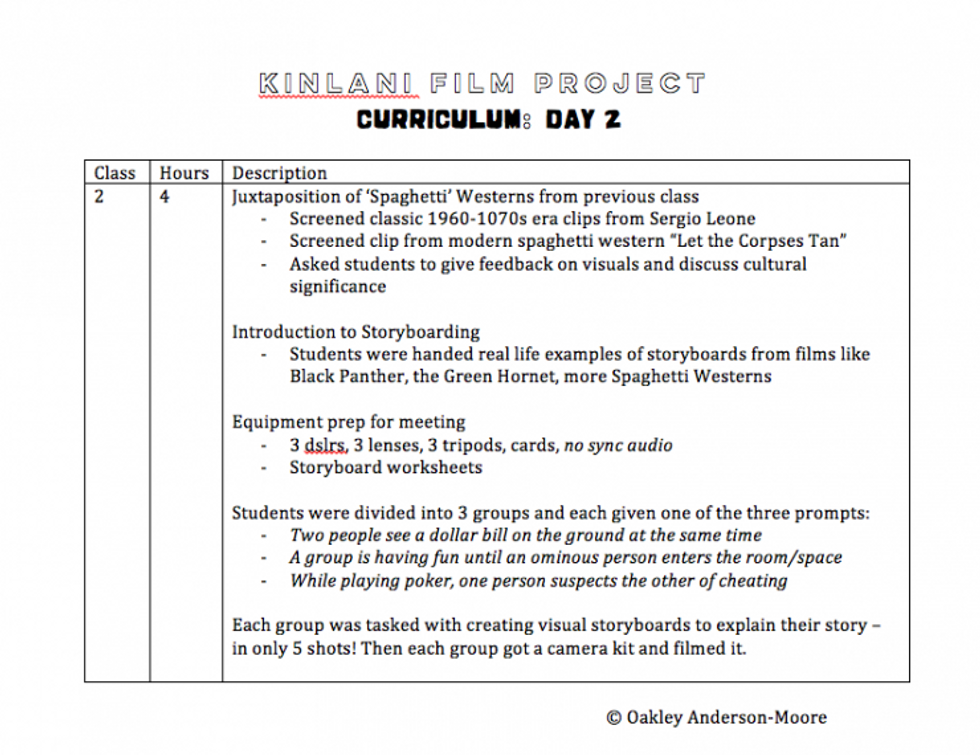

 No Film School's coverage of
No Film School's coverage of 









